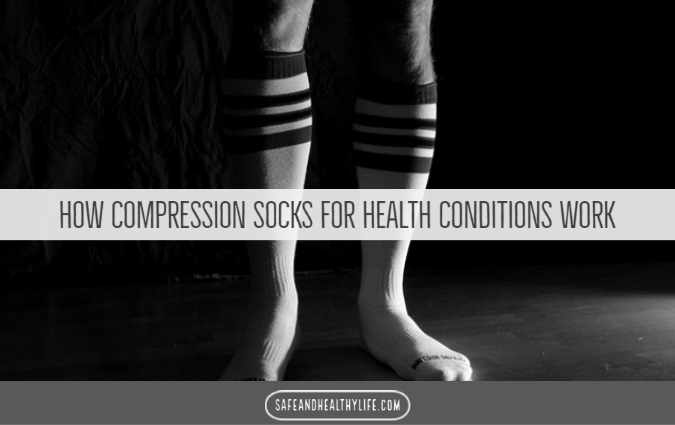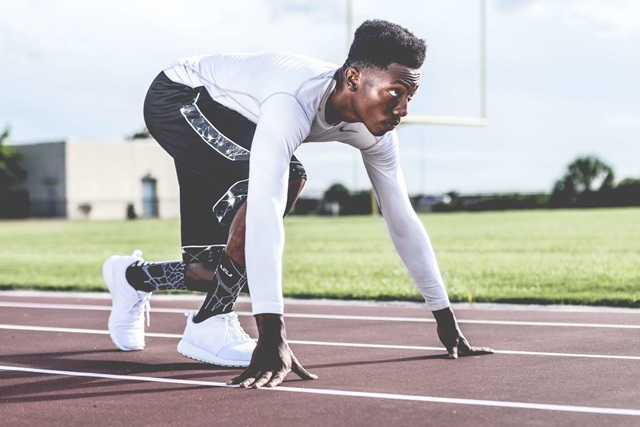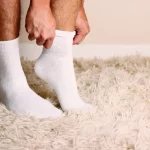
There’s a wide range of reasons why someone would use compression stockings, and most of them are related to leg cramps, blood flow, and swelling.
Although they are mostly used to deal with the conditions, a lot of people use them to feel more comfortable during physical activities and improve their performance in sports.
There are many different types of compression socks, though, and they all vary in size and strength, to suit the circumstances of each individual.
In this article, we are going to talk about how they work, on which occasions someone should use them, and how to pick the best one for you.
What Are Compression Socks?
As mentioned in many other different articles explaining what they are, we can simply describe them as stockings that are specially crafted to prevent further complications related to venous disorders.
Good examples of these health complications are edemas, thrombosis, and phlebitis. Here’s more detailed information https://en.wikipedia.org/wiki/Compression_stockings#Medical_uses.
They are designed to be elastic by nature while being able to compress the leg and pressure the limb.
The science behind them is simple: by compressing the limb, you reduce the length of the veins, thus, increasing the speed blood flows through them. This improves blood flow and valve efficiency at the same time.
This is great when it comes to helping with circulation, and preventing the appearance of blood clots around the leg. A knee-high compression sock can help with this with more efficiency, and help the treatment of other symptoms as well, including ulcers on the lower side of the leg.
At first, these stockings might feel weird. A lot of people complain about how they pressure the ankles, but they lower in strength when they reach the knees and thighs.
This is due to the main nature of the socks: they aim to reduce the blood pool in the feet and improve the circulation of blood all around the limb.
People who may want to consider using them suffer from health problems such as edemas, chronic venous insufficiency, thrombosis, and people with risks of circulation problems like diabetes.
They are also recommended for people that are recovering from surgery, pregnant women, people who need to walk, or stand for a long time, pilots, and athletes.
Other Benefits of Compression Socks.

Stockings that improve blood circulation can also help with other things. Believe it or not, it can help prevent muscle cramps and increases leg endurance while making it much less likely to ache after or during physical activities. Inflammatory problems are less likely to happen as well.
It is also said that using compression socks and compressive gear in the arms can help athletes improve their physical performance during training and sports competitions.
This is because of the noticeable improvement in blood circulation, which leads to more oxygen to the brain and body, making you more resistant to physical effort. Here’s more information on the matter.
How to Use Them
As mentioned earlier, there are different types of stockings, each one differing from strength and length to cover different parts of the body. Choosing the right one will heavily depend on your own circumstances.
Their strength of compression also decides how effective they are to combat circulation problems. The stronger it is, the more effective it will be, but there is also the deal with comfortability.
You don’t want to be uncomfortable all the way to work just because of some stockings, right?
If you are not at risk of suffering from the consequences of health conditions, and only want to relieve some of the discomforts of walking or standing for long periods of time, stockings with a low compression level might be ideal for you.
If not, you might want to get something a little bit more specific for you. Stores like Lasso Gear medical socks have guidelines to help you decide which model is the most suitable for you, depending on your circumstances and needs.
Most of the time, doctors recommend using them as long as possible to prevent blood flow problems and many other health complications, but you can take them off to sleep or take a bath.
To avoid side-effects, make sure they are properly stretched and do not roll them at any cost!
About The Author:
Stefan Savevski: web content writer/WordPress editor/web researcher. Faculty of Electrical Engineering and Information Technologies.




